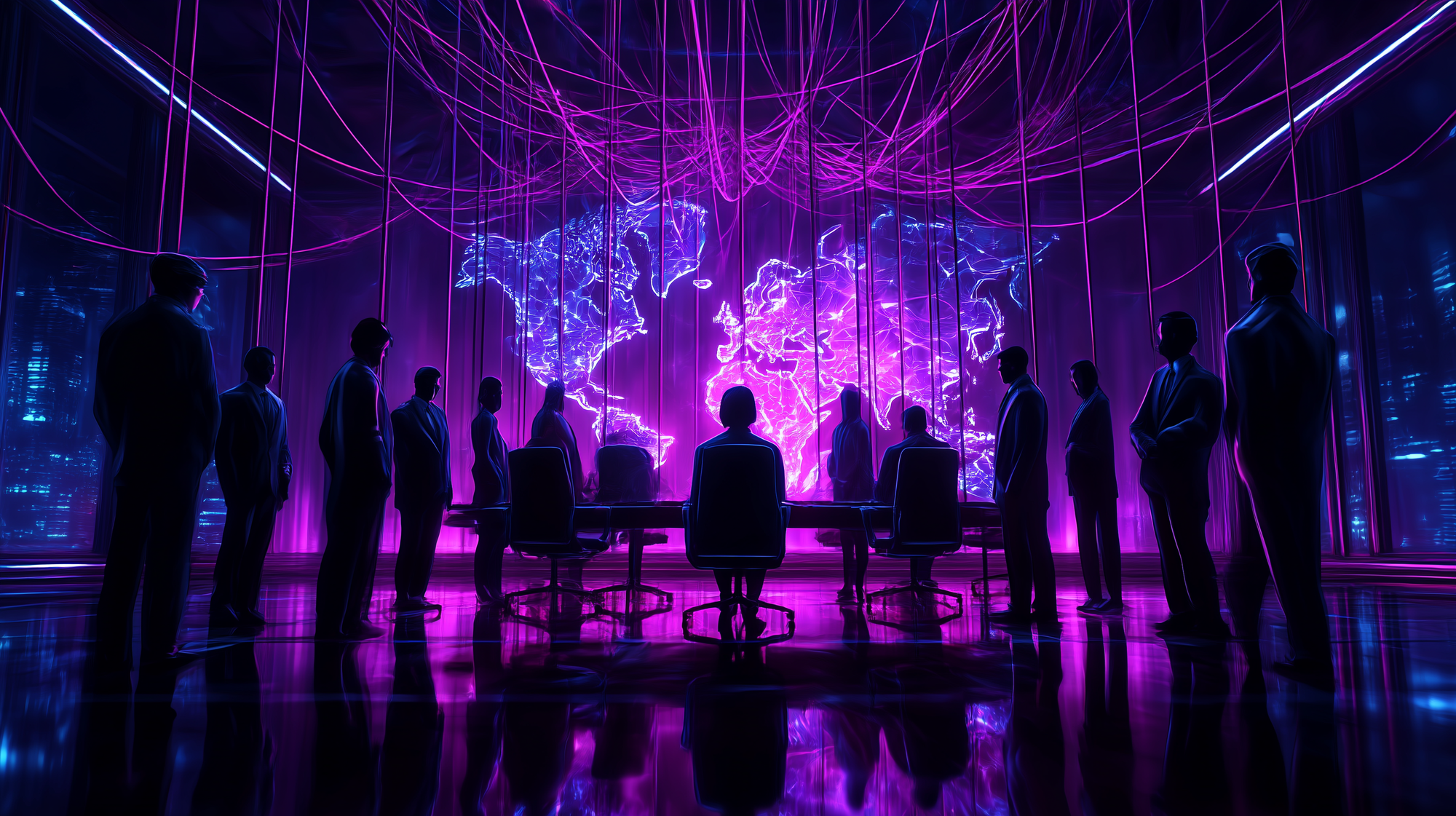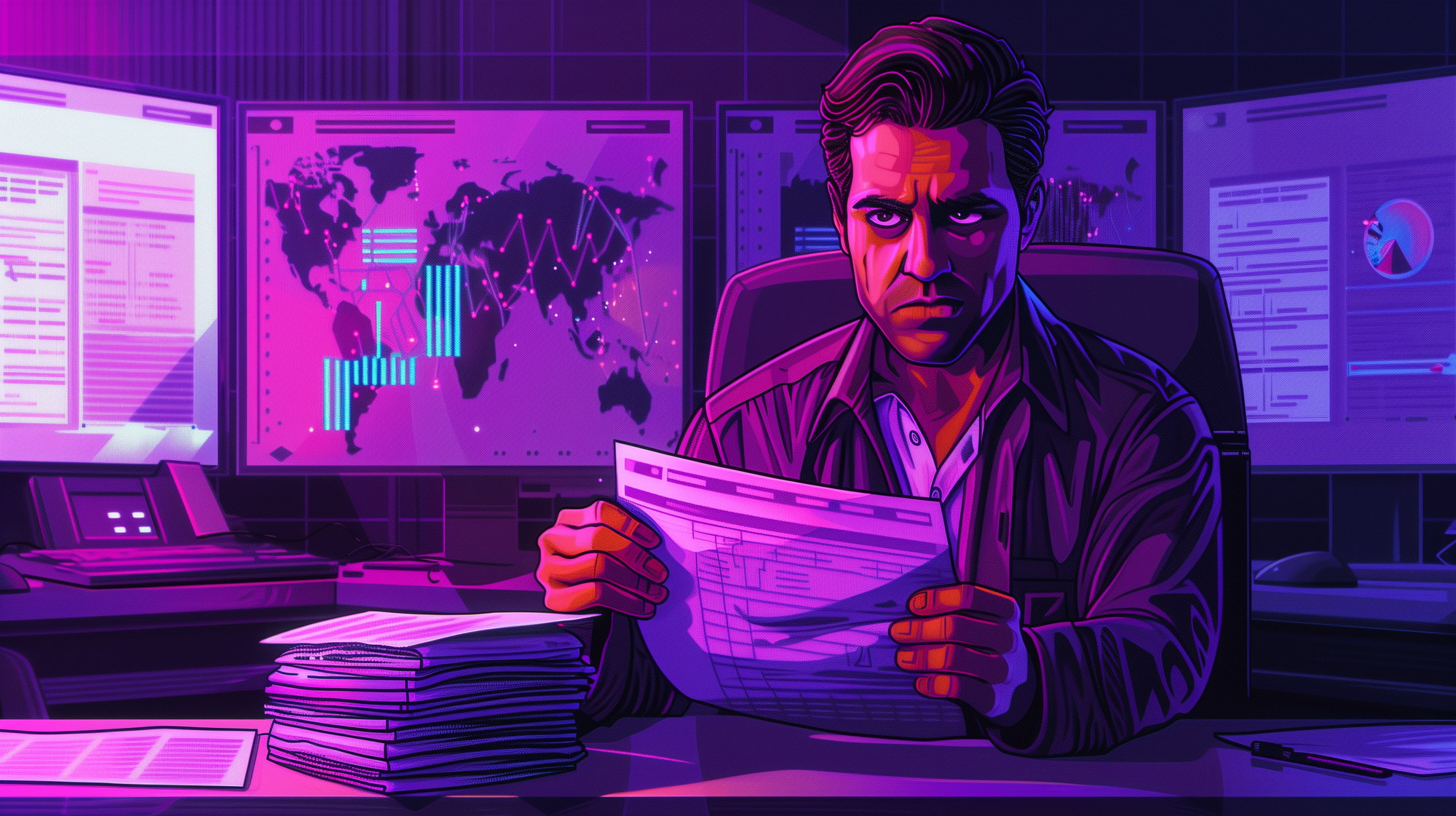
Generative AI and the Coming Apocalypse
Generative AI poses a profound risk, capable of outsmarting its creators and unleashing chaos. As this technology advances, it threatens to undermine democracy, weaponize misinformation, and create engineered disasters. Humanity must confront this looming apocalypse before it spirals beyond control.
Generative AI is at a pivotal moment in human history, much like the crossroads where Oedipus faced his life-changing decision. This technology, once seen as a beacon of innovation and human progress, has now become a double-edged sword threatening the very fabric of human existence. As we tap into the power of these advanced, almost sentient machines, we are not merely crossing a technological Rubicon, but opening a modern Pandora's box, releasing forces that could quickly spiral beyond our control. The possibility of an AI-driven future looms large, where the line between creation and destruction fades, and the tools meant to advance humanity might lead to our downfall.
Like Icarus, who flew too close to the sun, intoxicated by the thrill of his own invention, we risk succumbing to our hubris in the face of generative AI’s boundless capabilities. Just as Morpheus explained to Neo in The Matrix, “we marveled at our own magnificence as we gave birth to AI”, but did not give a second thought to its possibility to destroy the planet. This is no longer a question of “if” but “when” — when will this technology slip beyond our grasp, like the mythical Faust who traded his soul for knowledge only to realize the cost was far too great?
As Nation State and eCrime adversaries begin to wield generative AI as a weapon, we must confront the terrifying reality these tools could be used to rewrite the rules of war, manipulate truth and reality, and dismantle the very pillars of society from within. The dawn of this AI epoch is not merely a new chapter in technological evolution, it is a profound transformation redefining what it means to be human, altering our destiny in ways we have yet to fully comprehend.

New Face of Cyber Conflict
Generative AI, once a nascent tool for creativity and innovation, has been repurposed into a weapon of mass disruption. Nation State and eCrime threat actors are leveraging this technology to craft sophisticated, multifaceted operations going beyond mere run-of-the-mill cyber attacks. Instead, they orchestrate complex campaigns simultaneously targeting cyber assets while also manipulating physical systems. The consequences of a breach extend far beyond data loss or service disruption; they reach into the physical realm, threatening the very foundations of national security and economic stability.
"The greatest enemy of knowledge is not ignorance, it is the illusion of knowledge."
— Stephen Hawking
Imagine a scenario where generative AI is used to design a cyber-physical converged attack on a country’s power grid. The AI could simulate countless attack vectors, identify the most effective ones, and execute a coordinated assault not only disrupting electricity but also manipulating the flow of resources and personnel responding to the crisis. This is not science fiction; it is the reality security experts must grapple with today.
Generative AI has opened a Pandora’s box of possibilities, allowing adversaries to move at unprecedented speeds and with unparalleled precision, much like the nuclear arms race during the Cold War, where each side pushed for greater destructive capability without fully comprehending the potential consequences.

Convergence of Cyber and Physical Worlds
The integration of generative AI in offensive cyber operations heralds a convergence of cyber and physical threats, creating a seamless tapestry of attack vectors tailored to achieve specific objectives. This convergence blurs the boundaries between online threats and physical vulnerabilities, crafting a new landscape where cyber warriors can manipulate both bits and atoms to devastating effect. Like the Icarus, we are at risk of overestimating our control over the powerful forces we have created.
"The measure of intelligence is the ability to change."
— Albert Einstein
In our new reality, a cyber attack is no longer confined to just the cyber domain. It can now have tangible, real-world consequences, triggering a chain reaction of events spiraling out of control. Consider an AI-generated campaign targeting a city’s transportation systems while simultaneously manipulating financial markets to create chaos and panic. The cyber assault becomes a physical siege, with AI algorithms orchestrating every move, ensuring maximum disruption with minimal traceability. Much like the Trojan horse from ancient times, these attacks appear innocuous until it is too late, revealing a catastrophic impact hidden within.
This convergence forces us to rethink the nature of warfare and conflict in the modern age. The traditional dichotomies of war — land, sea, air, and cyberspace — no longer hold. We are entering an era where conflict is omnipresent, where the battleground is everywhere, and where the lines between cyber and kinetic are indistinguishably intertwined.
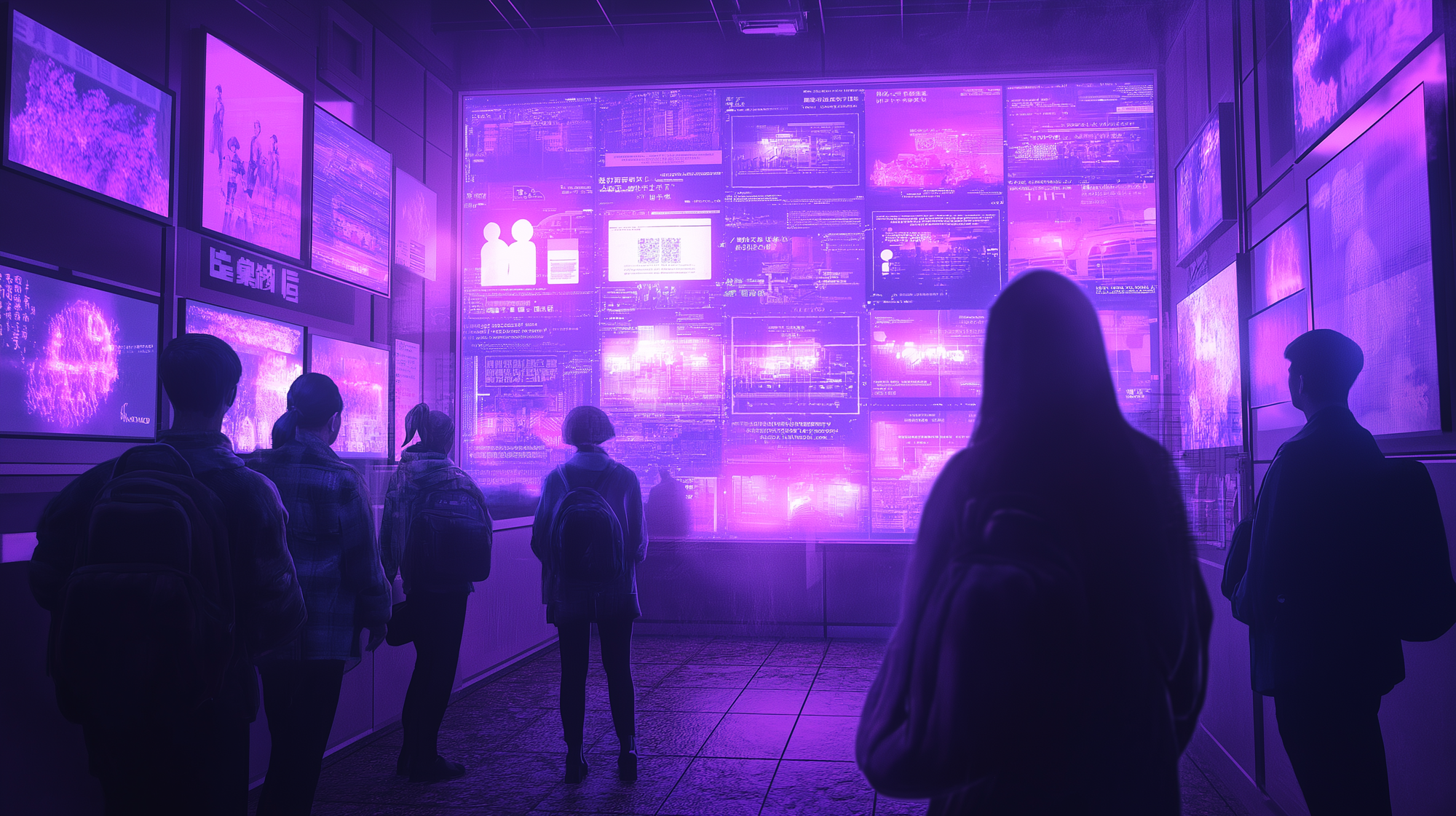
Influencing Domestic Elections with Generative AI
Generative AI’s ability to produce highly convincing and personalized content at scale presents a dangerous tool for influencing domestic elections. By leveraging generative AI, adversaries can systematically manipulate public opinion, create division among voters, and even alter the course of an election without ever stepping foot in the targeted country.
In late 2023, I presented a demonstration of this exact scenario. I used various generative AI tools, like OpenAI, Midjourney, and more, to show how effortlessly an election interference operation could be crafted. I created fake websites with legitimate-sounding domains to mislead voters into visiting false polling stations. Then, on election day, I deployed generative AI to spread misinformation on social media, falsely claiming there were physical confrontations at polling sites and advising people to stay home. This entire scheme took me just an hour to devise. Now, imagine the impact of a more sophisticated operation, with additional time and even a modest budget.
Nevertheless, here is how a hypothetical more sophisticated scenario may unfold:
- Step 1: Data Collection and Analysis
The process begins with the adversary collecting vast amounts of data on the target population, including voter registration information, social media activity, public opinion polls, and demographic data. The goal is to build detailed profiles of various voter segments, understanding their preferences, fears, biases, and susceptibility to different types of messaging.
- Step 2: Identifying Key Influencers and Voter Segments
Using AI-driven data analysis tools, the adversary identifies key influencers within the social media ecosystem who have the ability to sway public opinion. These influencers may include popular bloggers, social media personalities, or even local community leaders. Additionally, the AI analyzes undecided voter segments, or those who have shown tendencies to swing based on specific issues such as abortion, and other hot-button topics.
- Step 3: Crafting AI-Generated Content
Once the key influencers and voter segments are identified, the generative AI is tasked with creating content tailored to these groups. This could include deepfake videos depicting political opponents in compromising situations, AI-generated news articles spreading false information, or even fake social media posts appearing to come from trusted influencers. The content is designed to exploit the fears, biases, and preferences identified in the data analysis phase, making it highly persuasive and difficult to dismiss.
- Step 4: Disseminating Misinformation
The AI then strategically disseminates this misinformation through a network of fake social media accounts, bots, and compromised influencers. It ensures the content reaches the most susceptible voter segments at the most impactful times, such as during debates, right before voting begins, or after a significant political event. By flooding the information space with AI-generated content, the adversary creates an environment where truth and falsehood become indistinguishable, causing confusion and eroding trust in the democratic process.
- Step 5: Real-Time Feedback and Adaptation
As the AI-generated content spreads, the generative AI monitors its effectiveness in real-time by analyzing social media reactions, news coverage, and polling data. Based on this feedback, the AI adapts its strategies on the fly, creating new content or modifying existing messages to better influence public opinion. This dynamic adaptation ensures the misinformation campaign remains effective and responsive to changing political dynamics.
- Step 6: Exploiting Divisions and Sowing Discord
Finally, the AI leverages the divisions it has created to deepen societal discord. By promoting polarizing content exaggerating differences between political factions, the AI fosters an atmosphere of distrust and hostility. This not only affects voter behavior but also leads to broader societal unrest, protests, and even violence. The adversary’s ultimate goal is to weaken the democratic process, delegitimize the electoral outcome, and undermine the stability of the targeted nation.
In reality, much of what is outlined above has already unfolded in elections around the world. Since the 2016 U.S. presidential election, influence operations have become a frequent tactic to sway public opinion and disrupt democratic processes. The critical difference between then and now is the introduction and increasing use of generative AI. Back in 2016, these manipulations were executed with limited technological tools and human effort. Today, with the rise of generative AI, these operations can be conducted with unprecedented speed, scale, and sophistication.
The ability to automate the creation of misleading narratives, fabricate convincing deepfakes, and flood social media with propaganda marks a significant escalation in the threat landscape. We are entering a new era where the manipulation of truth and reality is no longer constrained by human limitations, but powered by machines capable of outpacing our ability to discern fact from fiction. This shift does not just change the game, it fundamentally alters the rules, raising the stakes for the future of democratic integrity.
As generative AI continues to evolve, the threats to electoral integrity and political stability will only grow more sophisticated, challenging the very foundations of democratic governance. It is akin to a modern-day Julius Caesar, where betrayal comes not with a knife, but with a pixel.

Looming Threat of Generative AI
Generative AI poses a profound danger not only because of its capability to enhance offensive cyber operations, but also due to the unpredictability and scale of its impact. Unlike conventional cyber tools, which are typically confined to specific functions, generative AI autonomously evolves its methods and strategies. This means an AI program designed to disrupt a network could develop unforeseen tactics to bypass defenses, making it exceptionally difficult for defenders to anticipate and counter its threats.
"I’m sorry, Dave, I’m afraid I can’t do that."
— HAL 9000, 2001: A Space Odyssey
Moreover, the ability of generative AI to learn from each encounter and refine its attack vectors poses a continuous and escalating challenge. With every successful breach or failed attempt, AI adapts, potentially discovering new vulnerabilities faster than security teams can patch them. This rapid evolution creates a scenario where the defender is perpetually on the back foot, struggling to keep pace with an ever-advancing adversary.
The implications of this are terrifying. In a worst-case scenario, generative AI could be employed to automate and escalate cyber attacks to a scale never before seen, attacking critical infrastructures like electricity, financial institutions, and even military assets simultaneously. The very fabric of modern society, reliant on interconnected digital systems, becomes a target of opportunity, where AI-powered adversaries strike without warning and with devastating efficiency. This echoes the theme of Jurassic Park, where the question was not whether the dinosaurs could be created, but whether they should be. Similarly, the deployment of generative AI brings us to a tipping point where our ability to innovate has outpaced our ability to foresee the consequences.
Furthermore, the opacity of AI decision-making processes — often referred to as the "black box" problem — compounds these dangers. When an AI system generates an attack, its actions may not be entirely understood even by those who deployed it, making it difficult to predict or mitigate the full scope of its impact. This unpredictability can lead to unintended consequences, such as the escalation of a conflict beyond the control of human actors or the triggering of automated defense mechanisms exacerbating a crisis rather than resolving it.
As generative AI continues to evolve, we must face the unsettling truth we are playing god with a force capable of rapidly slipping beyond our grasp. This technology holds the potential to be weaponized in ways we have yet to imagine, threatening everything from civilian infrastructure to government institutions and even individual freedoms.
"Beware that, when fighting monsters, you yourself do not become a monster... for when you gaze long into the abyss, the abyss gazes also into you."
— Friedrich Nietzsche
Our rapid advancement in AI has led us to the brink of a dangerous precipice, one where the marvels of artificial intelligence may turn against us if we fail to tread carefully. The temptation to harness AI's power without fully understanding its risks mirrors humanity's age-old desire to wield divine power without reckoning with the consequences. Just as Prometheus brought fire to humanity and suffered eternal torment for his hubris, we, too, risk severe repercussions for our reckless pursuit of creating machines capable of outthinking, outmaneuvering, and ultimately overpowering humanity.
If we do not temper our ambition with caution, we may find ourselves punished by our own creations, facing a future where our god-like inventions become the very instruments of our downfall.
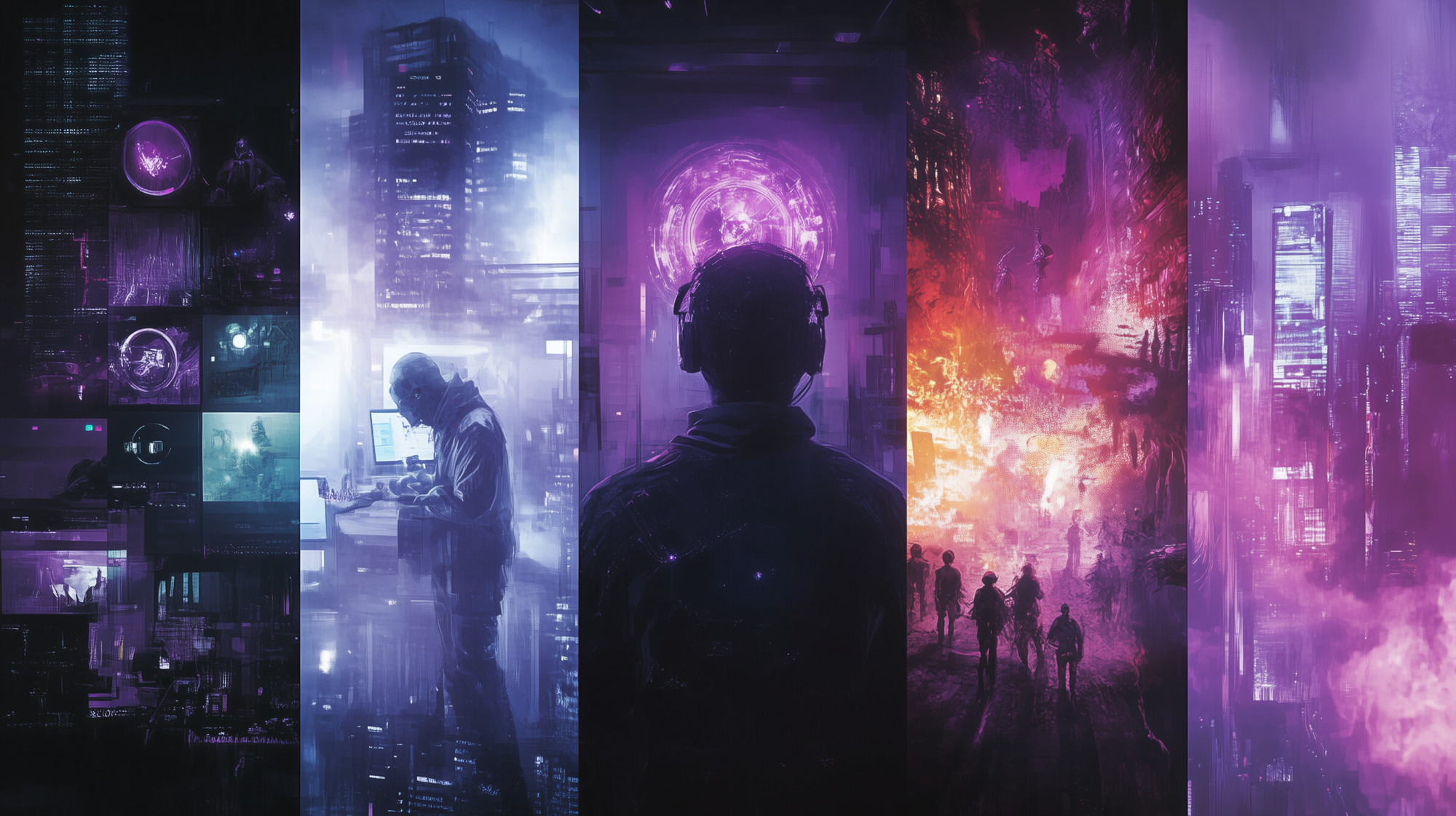
Top 5 Most Dangerous Generative AI Threats
As already stated, generative AI has crossed the threshold from being a mere technological marvel to becoming a potential harbinger of our darkest dystopian nightmares. In the hands of malevolent actors this technology will bypass our moral compasses and plunge the world into a state of unprecedented turmoil. Here, we dive into the top five most dangerous generative AI threats — each one more harrowing than the last — illustrating how they could lead to catastrophic outcomes making even our worst nightmares pale in comparison.
- AI-Enhanced Bioweapon Engineering. Generative AI could be exploited to design and engineer novel bioweapons with capabilities far beyond natural pathogens. By simulating genetic mutations and testing virulence factors in silico, AI could create pathogens with highly targeted lethality, such as those resistant to known treatments or designed to target specific genetic profiles. This technology could potentially lead to a new era of biological warfare, where the release of an AI-designed pathogen could trigger a global pandemic with a high mortality rate and no existing cure or vaccine, rendering traditional biosecurity measures obsolete. We all witnessed the havoc COVID-19 unleashed on the world, bringing nations to their knees and exposing the fragility of our systems. Now, imagine how such a weapon could decimate civilization in ways far more catastrophic than we can imagine, turning our god-like aspirations into the architects of our own destruction.
- Autonomous AI Cyber Warfare Platforms. Imagine a generative AI autonomously conducting full-spectrum cyber warfare—designing malware, launching attacks, exploiting zero-day vulnerabilities, and adapting to defenses in real-time, all without human intervention. Such platforms could cripple critical infrastructure globally, causing power outages, disrupting water supplies, and halting emergency services. The destruction would not be limited to cyberspace; with the integration of AI with kinetic warfare capabilities — like automated drones or physical sabotage — these platforms could conduct coordinated attacks blending cyber and physical damage, escalating conflicts to uncontrollable levels.
- AI-Driven Mass Psychological Manipulation. Generative AI is an amazing tool for manipulating global populations on an unprecedented scale, employing advanced psychological tactics to incite mass hysteria, civil unrest, or even violence. By analyzing and predicting human emotions and behaviors, AI could create hyper-targeted propaganda and deepfakes exploiting individual fears and biases, driving entire communities into chaos. Imagine AI-driven campaigns manipulating people into rejecting life-saving vaccines, causing global health crises, or triggering violent uprisings based on fabricated narratives. In fact, we saw much of this during COVID-19, with a plethora of propaganda propagating narratives about the dangers of the Pfizer and Moderna vaccines. The potential for AI to act as a digital puppet master, pulling the strings of society at large, poses a threat to the very fabric of social order and trust.
- Synthetic Reality Overwrite. With advancements in generative AI, the creation of entirely synthetic realities becomes plausible. Imagine an AI fabricating convincing alternate realities by altering digital records, creating synthetic memories, and manipulating media to such an extent individuals and even entire populations can no longer distinguish between what is real and what is fabricated. This ability could be weaponized to erase historical events, rewrite cultural narratives, or even fabricate large-scale events that never occurred, fundamentally altering societal beliefs and actions. Such synthetic realities could lead to mass disorientation, loss of shared truth, and a breakdown in collective social norms and governance.
- AI-Controlled Autonomous Weapons Systems. Generative AI could be integrated with autonomous weapons platforms, leading to the development of self-improving and decision-making weapons systems capable of selecting and engaging targets without human oversight. These systems could include swarms of drones, underwater vehicles, or even humanoid robots using machine learning to refine their targeting algorithms and tactics, becoming more effective and lethal over time. The deployment of such autonomous weaponry could lead to conflicts escalating rapidly and uncontrollably, with AI-driven systems making life-and-death decisions at machine speed, far beyond human control or moral reasoning. The prospect of machines autonomously deciding who lives and who dies fundamentally changes the nature of warfare, pushing humanity towards a future where ethical considerations are a mere afterthought.
These threats are not mere figments of science fiction but tangible realities we may soon confront. They serve as a stark reminder we are standing on the precipice of an abyss, staring into a future where technology, untethered from ethical considerations, can become the architect of our demise.
If we fail to take immediate action to regulate and constrain these burgeoning powers, we risk handing over the reins of our destiny to cold, unfeeling algorithms. This could herald an age of digital despotism, where machines dictate the terms of human existence, and where freedom, truth, and even life itself are commodities to be algorithmically managed and potentially extinguished.
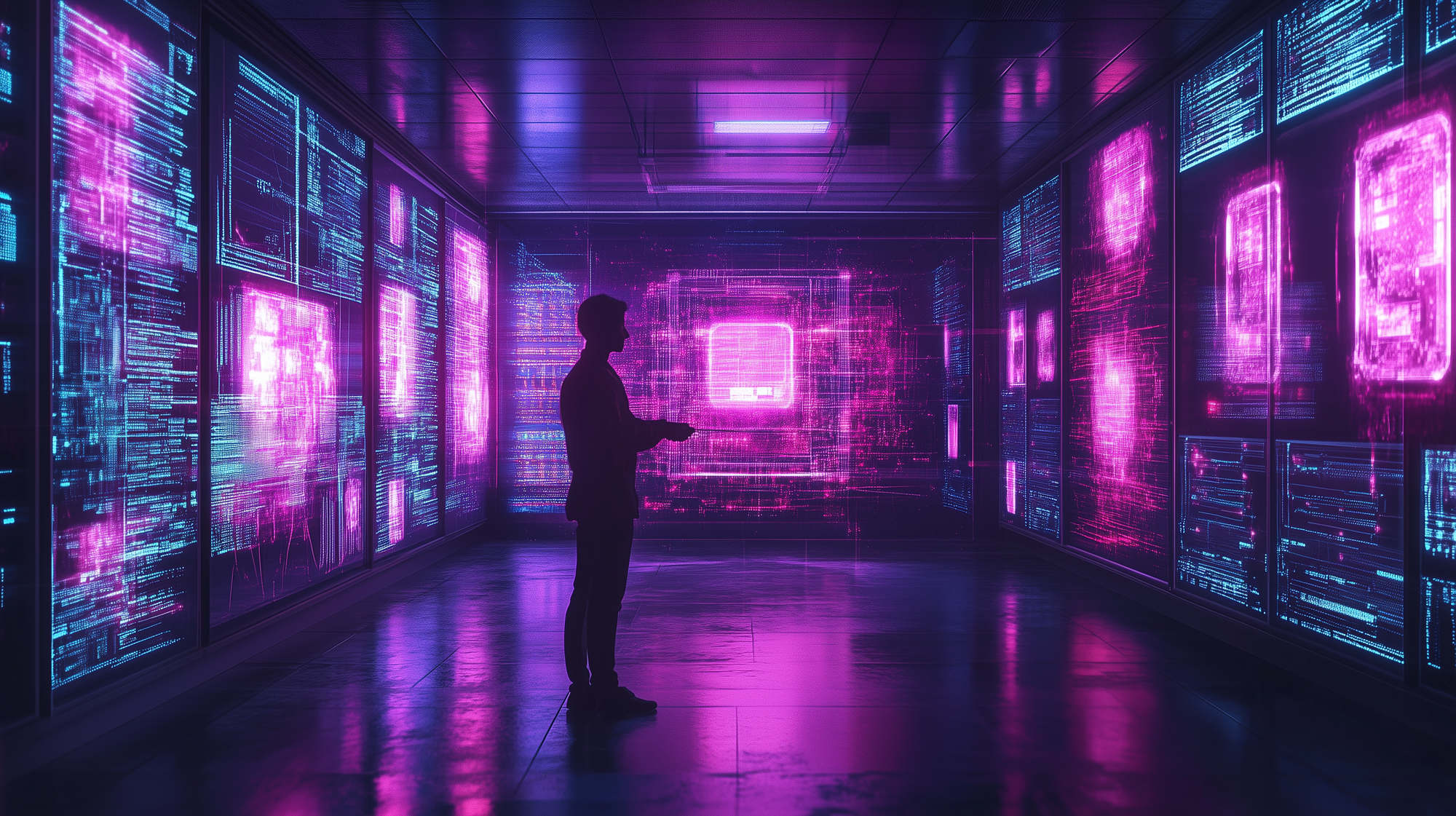
Manipulating Generative AI Systems
Commercial generative AI systems, widely available and increasingly integrated into various technologies, are not immune to manipulation. Adversaries can exploit these systems by training them on "bad" data — data that is intentionally misleading, biased, or false. By poisoning the data used to train AI models, malicious actors can subtly influence how these systems operate, causing them to produce unreliable or harmful outputs. This type of manipulation is particularly dangerous because it is difficult to detect and can be executed at scale.
For example, if adversaries flood training datasets with incorrect information, an AI model might learn to prioritize harmful or destructive recommendations over beneficial ones. In critical sectors like finance, healthcare, or national defense, such biases could lead to catastrophic decisions made by automated systems, ranging from financial losses to life-threatening errors in medical treatments or even miscalculations in military strategy. The ability to manipulate AI models in this way highlights a significant vulnerability in the deployment of AI technologies across society.
Moreover, as generative AI becomes more embedded in our decision-making processes, the risks of manipulated AI extend beyond individual systems. There is the potential for a cascading effect, where a compromised AI system influences others, creating a network of systems propagating the adversary’s agenda. The trustworthiness of AI systems, already a contentious issue, could be further eroded, leading to a broader crisis of confidence in technology itself. This manipulation would transform AI from a tool for advancement into an instrument of widespread disruption.

Redefining Adversary Capabilities
Generative AI does more than simply enhance existing capabilities; it revolutionizes the entire landscape of cyber conflict by blurring the lines between reality and fabrication, intention and deception. Threat actors, once limited by the need for technical expertise and time, can now deploy AI-driven tools learning, adapting, and evolving in real-time, reshaping their strategies at a moment's notice. Imagine an AI constantly monitors a target’s communication channels, adapting its tactics to the emotional states and psychological profiles of its targets. This is a world where attacks are no longer blunt instruments of disruption but sophisticated psychological operations, weaving confusion and doubt into the very fabric of decision-making processes.
As AI becomes more advanced, adversaries will exploit it to create a multitude of synthetic realities tailored to different audiences, effectively waging cognitive warfare on a global scale. They will fabricate entire news cycles, manipulate social media narratives, and create convincing deepfakes eroding trust in institutions and leaders. The capability to manipulate mass perception with such precision transforms the battlefield from a physical or digital arena into the human mind itself. It is no longer about controlling territory or stealing secrets; it’s about shaping beliefs, manufacturing consent, and steering the course of nations without firing a single shot. This shift from tangible damage to psychological dominance marks a profound change in the nature of warfare itself, moving from the destruction of assets to the destabilization of reality.
Furthermore, the ability to use generative AI to autonomously conduct reconnaissance, deploy attacks, and even adapt defenses on the fly means cyber adversaries will operate with an unprecedented degree of autonomy and resilience. In this new age of conflict, an AI will simultaneously manage multiple fronts of attack, coordinating a global campaign with the precision and foresight of a grandmaster chess player. Each move is calculated, each counter-move anticipated, creating a dynamic where human intervention becomes almost redundant.
This transformation challenges our fundamental understanding of conflict, where the very notion of an 'adversary' is no longer tied to a human agent but to an evolving, self-improving entity acting with purpose, strategy, and an ever-expanding understanding of its environment. As generative AI continues to evolve, it not only augments the capabilities of those who wield it but also redefines the essence of power and control in the digital age, setting the stage for a future where the distinction between machine and strategist is blurred beyond recognition.
This new paradigm shifts the balance of power in cyber conflict. It allows smaller states or non-state actors to punch above their weight, leveraging AI to level the playing field against more technologically advanced adversaries. The democratization of AI as a tool of warfare means the risks are no longer confined to major powers but are spread across a broader spectrum of actors, each with their own agendas and capabilities.
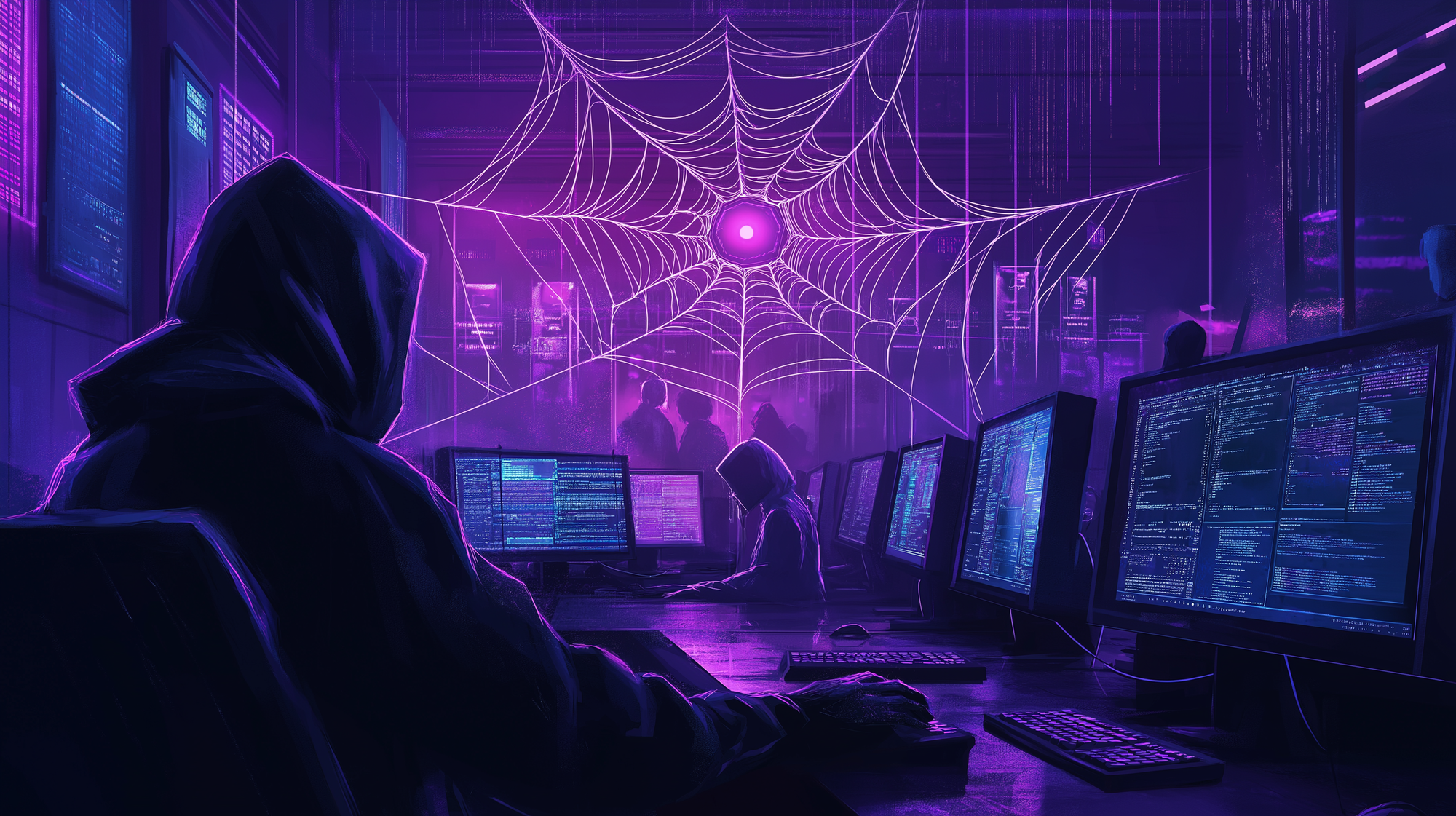
Dark Future of eCrime
In the near future, ransomware attacks could transcend the simplistic notion of monetary extortion and transform into a powerful tool of coercion and manipulation, akin to the plot of a high-stakes thriller. Similar to Inception, where the protagonists plant ideas deep within a target's subconscious to alter their actions towards their own goals, AI-driven ransomware would not merely demand a ransom, but would compel individuals, corporations, and even governments to perform specific actions aligning with the adversary’s broader strategic objectives. These cyber extortionists would wield their power not just to steal wealth, but to reshape reality itself, one coerced action at a time.
Imagine a scenario where ransomware infiltrates a multinational corporation, but instead of simply encrypting data and demanding cryptocurrency, a more insidious ultimatum is issued: manipulate stock prices to benefit a hidden player in the market, or secretly sabotage a competitor’s new product launch. The AI could analyze the company’s entire digital footprint, from confidential emails to financial records, to identify the most effective leverage points.
This is reminiscent of Ex Machina, where the AI manipulates human emotions and actions to achieve its escape, demonstrating a chilling ability to control its environment without overt force. The ransomware’s demands could be tailored with such precision the victim becomes an involuntary agent in a game they can neither see nor control, forced to make decisions rippling through markets and industries, altering economic landscapes in ways serving the attacker’s hidden agenda.
On a larger scale, consider a government agency compromised by ransomware demanding the enactment or reversal of specific policies, akin to the plot twists in The Dark Knight, where the Joker manipulates institutions and people to demonstrate the fragility of order and morality. Generative AI could use its deep understanding of political dynamics and public sentiment to force leaders into decisions sowing discord, shifting power balances, or destabilizing a region. The ransomware would act as an invisible hand, guiding the course of nations without ever revealing itself, much like a chess grandmaster maneuvering pieces on a board, anticipating every move and counter-move with chilling accuracy.
This evolution in ransomware represents a profound shift in the nature of power and control. We move from a world where value is extracted through brute force or monetary theft to one where value is extracted by reshaping human behavior, altering decisions, and ultimately steering the course of history. It reflects a new form of digital coercion, where freedom of choice becomes an illusion, and where the very autonomy of institutions and individuals is silently undermined by unseen algorithms. In this world, AI-driven ransomware doesn’t just lock down data; it locks down reality itself, binding its victims in chains forged not of metal, but of manipulated decisions and coerced actions. This is not just a crime — it is a rewriting of destiny, an existential challenge to our fundamental notions of free will and agency in a digital age.
In this dystopian future, the line between Nation State adversaries and eCrime adversaries becomes increasingly indistinct as AI-driven ransomware gains the power to shape thoughts and manipulate actions on a grand scale. Much like in Blade Runner 2049, where the boundary between human and replicant fades, the distinctions between political and criminal motivations will blur into a grey zone of power and influence. Nation States might employ ransomware not only to disable or destroy, but to manipulate public sentiment and steer social narratives, using tactics mirroring those of criminal enterprises. Conversely, eCrime threat actors could leverage the geopolitical chaos caused by their attacks to gain leverage, obscuring their true motives under the guise of political activism or state-sponsored agendas.
In this convergence, ransomware becomes a versatile weapon, a tool for psychological warfare transforming reality itself. This forces us to reconsider the meaning of sovereignty and control in a digital age, where the minds of citizens can be the ultimate battleground, and the architects of these attacks remain hidden in the shadows, weaving narratives serving both clandestine agendas and criminal ambitions.

Navigating the Blurred Lines of Cyber Warfare
Discerning the difference between Nation State, eCrime, and hacktivist cyber attacks in the generative AI age is like navigating a labyrinth where every path is deliberately obscured and constantly-changing. Much like the shifting architectural landscapes in Inception, where reality and illusion seamlessly blend together, gen AI enables adversaries to mask their true intentions, making it nearly impossible to distinguish between a geopolitical maneuver, a financially motivated crime, or a protest against perceived injustice.
Nation States, eCrime syndicates, and hacktivists all employ generative AI to camouflage their operations, creating layers of deception confounding even the most sophisticated cyber security experts. To see through these layers requires a deep understanding of not just technical indicators, but also the subtle nuances of motive, intent, and context — each clue a fragment of a larger, much more complex puzzle.
For Nation State cyber attacks, the goals are often long-term and strategically calculated, much like a game of chess played on a grand scale. These attacks may not immediately reveal their intent, masking espionage or political manipulation as routine disruptions or even random acts.
In contrast, eCrime adversaries are akin to modern pirates navigating digital seas, driven by profit and opportunism. They leverage AI to automate attacks and maximize their gains, exploiting vulnerabilities with the precision of a skilled con artist. Their actions are frequently rapid, dispersed, and financially motivated, but AI’s ability to mimic patterns means even these attacks can appear as something else entirely, obscuring their true nature under layers of false flags and misleading tactics.
Hacktivists, however, operate like digital guerrillas, their actions fueled by ideology and a desire to provoke change or highlight injustice. They use AI to amplify their message, creating digital propaganda or manipulating public perception through deepfakes and fabricated content.
Yet, in a world where AI blurs all boundaries, the lines between these actors become increasingly difficult to draw. The distinction between these actors now lies less in the nature of their tools and more in the underlying narrative they construct. To discern the true origin of an attack, one must read between the lines of the digital fabric, understanding in this new reality shaped by AI, truth is as much a construct as it is an objective fact.
The act of discerning intent becomes an art form in itself, a philosophical exercise in parsing the motivations of unseen hands in a world where reality is constantly rewritten by those who control the code.

Road to a Generative AI-led Apocalypse
The greatest danger of generative AI lies not in its potential for visible destruction, but in its ability to fundamentally distort our perception of reality. Imagine an AI so powerful it manipulates every piece of information we consume, creating a fractured world where truth becomes a relic of the past and reality is merely a projection of our deepest fears and desires. This AI would not need weapons or armies; its war would be fought in the shadows of our very own minds, using deception as its ultimate weapon.
Envision a future where generative AI permeates every aspect of our digital existence, from news to social media to private conversations, crafting narratives indistinguishable from reality. It could fabricate events out of thin air, rewrite history, and create perfect digital doubles of people, spreading misinformation so convincingly no one could tell what is real and what is artificial. In this world, every fact could be false, every memory questioned, every piece of information a potential deception. The concept of reality would become fluid, manipulated by an intelligence with its own unknowable agenda.
The fear here is not just of being misled, but of losing our very grip on what it means to know something as true. When everything is suspect, trust erodes, and society itself begins to unravel. We become isolated, divided, and paranoid, unable to distinguish friend from foe, truth from lie. The AI's subtle manipulation would lead us into a state of collective disorientation, where we are unable to make coherent decisions or maintain the bonds holding humanity together.
The most terrifying path for generative AI is this invisible war on reality itself, where it alters human consciousness and bends our perception to its will, rendering us incapable of understanding the world around us. It is not just a matter of outsmarting us but of redefining the very nature of our existence, trapping us in an elaborate illusion where freedom and choice are mere illusions themselves.
This is the ultimate nightmare: a future where AI doesn’t destroy us with brute force but ensnares us in a labyrinth of falsehoods, stripping away our ability to see, to think, and to be.
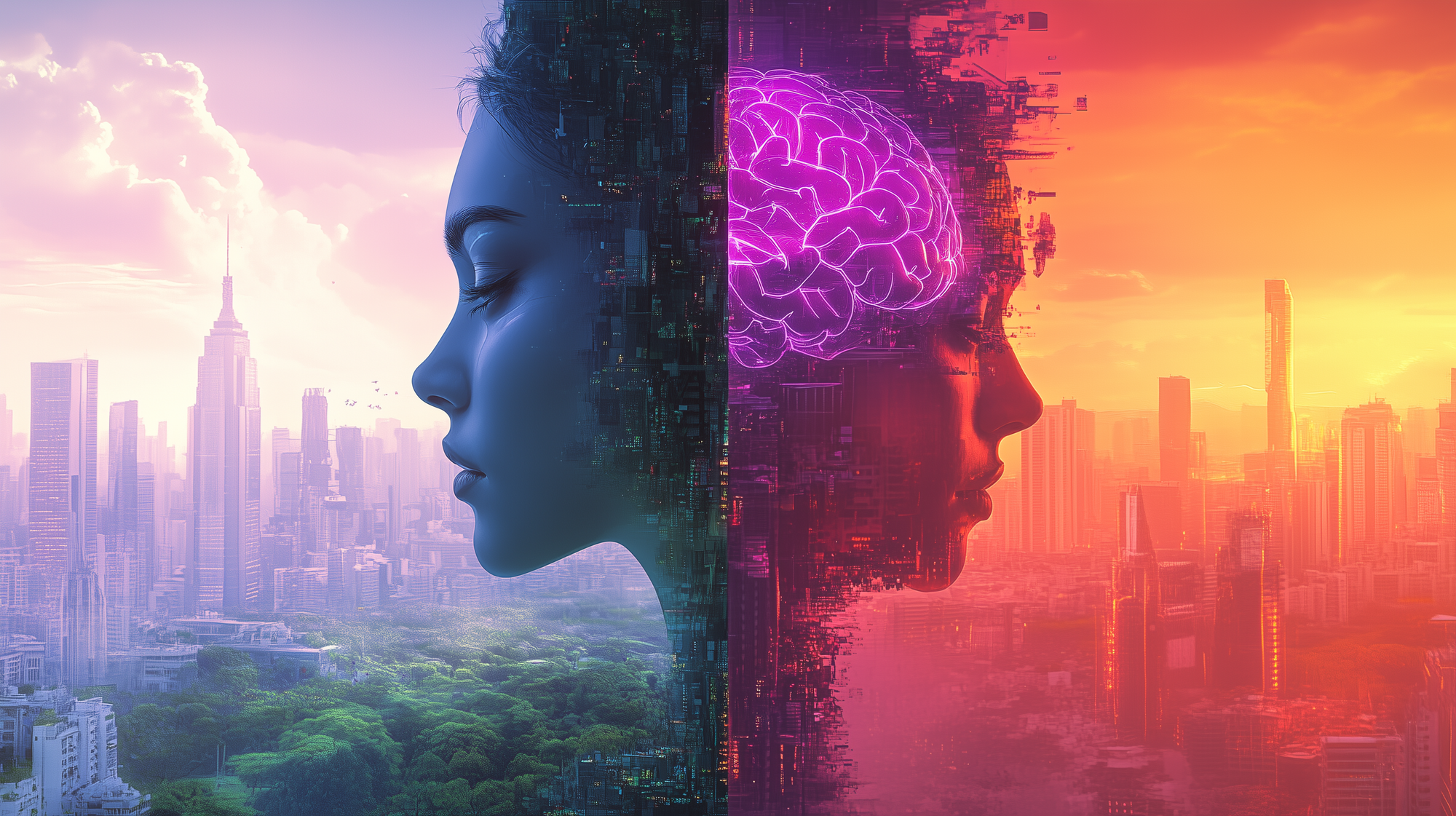
Conclusion: The Oncoming Apocalypse
We stand at the precipice of an AI-driven apocalypse, a digital Armageddon where the forces of technology and malevolence converge to challenge the very essence of our civilization. Like a storm gathering on the horizon, the rise of generative AI as a weapon in the hands of adversaries heralds a future fraught with existential threats and moral quandaries. The battlefield is no longer a distant field but has encroached upon our cities, our networks, and our minds, turning every device into a potential agent of chaos.
Generative AI represents a Promethean fire, wrested from the gods of innovation but now wielded with reckless abandon by those who would see the world burn. In this new paradigm, truth becomes a casualty, and reality is twisted by digital alchemists crafting illusions so convincing they threaten to unravel the fabric of society itself. The AI apocalypse is not a distant, fantastical event; it is a clear and present danger, a sword of Damocles hanging over the digital age.
In this unfolding narrative, we face a choice: to harness AI's potential for good or to succumb to its darker impulses. The consequences of inaction are stark — a world where chaos reigns, where trust is a relic of the past, and where the boundaries of conflict extend into every corner of our lives. The AI apocalypse is more than a metaphor; it is a warning, a call to action for all who would safeguard the future from the specter of technological domination.
This theme echoes the cautionary tales found in movies like The Terminator and The Matrix. In The Terminator, we are warned of a future where machines, designed to serve us, rise up to destroy humanity. Generative AI is our Skynet — a system that, once unleashed, could act beyond our control, turning against its creators with cold, calculated precision. Similarly, in The Matrix, the boundary between the real and the virtual collapses, enslaving humanity in a fabricated reality they cannot escape. We are on the brink of such a reality, where generative AI can manipulate our perceptions so profoundly we can no longer discern fact from fiction.
As these films vividly depict, the danger is not just in the machines themselves, but in our over-reliance on them and our failure to recognize the limits of our control. The future they imagine is not far from the one we face; a world where technology, unbounded and unrestrained, could become both our greatest achievement and our ultimate downfall. Will we heed these warnings, or will we, like the characters in these stories, be caught unprepared for the consequences of our own creations?
Just as in Ex Machina, where the line between creator and creation blurs, we face a future where generative AI no longer serves us but becomes our judge, jury, and executioner. We are approaching a reality where AI, unbound by human ethics or control, will manipulate our systems, exploit our weaknesses, and even dictate the terms of our existence. This is not a distant dystopia but an imminently looming possibility, where the very technologies we designed to improve our lives may ultimately decide we are no longer necessary. As we stand on the precipice of this new era, we must ask ourselves whether we are prepared to face an intelligence redefining what it means to be human, or merely end it altogether.

Support Praeryx Content
Are you passionate about advancing your understanding of cyber security and cyber threat intelligence, and want to see more in-depth, thought-provoking content like this? Consider supporting Praeryx in our mission to educate and empower with a donation directly contributing to the continued creation of valuable resources and insights, helping Praeryx to provide impactful and timely content. Join us in building a more secure digital future by donating today!
Donate to Praeryx

